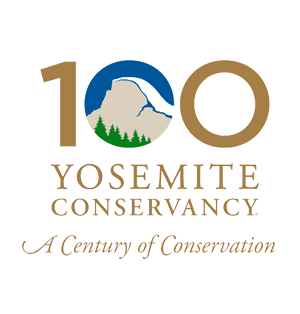Back to Wilderness Hub | Permit Pickup | Trailhead Parking
Yosemite National Park is home to 300-500 American black bears. Black bears have an incredible sense of smell, are extremely curious and intelligent, and have a huge appetite, consuming up to 20,000 calories per day! This combination leads them to want to seek out our high-calorie food.
Once a black bear obtains our food, they begin to forage less within their naturally occurring diet (acorns, berries, grubs, etc.) and instead, persist in their attempts to obtain the scented items we humans possess. Once a bear obtains our food, they struggle to go back to foraging on their own and rely on us and our scented items as their main source of food.
Bear resistant-food containers (“bear canisters”) are required for overnight hikers throughout Yosemite Wilderness and are the only effective and proven method of preventing black bears from obtaining our food.
If you have your own bear canister, make sure it’s an allowed bear canister. If you do not have your own, you can rent a bear canister at any Wilderness Permit Station for $5 per week.
Visit Yosemite National Park’s Bears and Food Storage page to learn more.
Aside from the High Sierra Camps and Little Yosemite Valley backpackers areas, there are no toilets in Yosemite Wilderness.
You must travel a minimum of 100 feet (30 meters; 40 paces) away from trails, camp areas and water (even dry creek beds) before finding good, living soil to bury your solid waste. Deposit human waste in a dug six-to-eight-inch cat hole, then fill the hole with dirt and cover it up with natural materials, making it appear that you were never there.
Watch a wilderness ranger explain How to Poop in the Woods.
The only thing you can leave in Yosemite Wilderness is your poop. Do not bury your toilet paper or wipes. Do not burn your toilet paper or any trash.
Always pack out all trash and toilet paper. There are no trash cans in the wilderness.
Learn more on Yosemite National Park’s Backpacking page.
Campfires are allowed in Yosemite Wilderness below 9,600 feet elevation in existing fire rings, unless otherwise indicated by current fire restrictions. Use only dead, downed wood. Do not construct new fire rings. Fires must be extinguished with a lot of water, and your coals must be cool to the touch before you leave the area. Sand is not an effective method for fire extinguishing.
To learn more about fire restrictions, visit Yosemite National Park’s Fire Restrictions page.
It is important to consider the different seasons in Yosemite, and how these can impact your wilderness trip. If you are planning a trip in the high country, you might be surprised to find that trails can still be up to 80% snow covered well into June! Many of Yosemite’s creeks and streams are ephemeral and may be dry by late summer, particularly at lower elevations. Be sure to check wilderness trail conditions leading up to your trip.
Weather can change quickly and dramatically at any time of year, so it is important to check a reliable forecast. The weather in Tuolumne Meadows can be cool and rainy while Yosemite Valley is over 100 degrees and sunny, so it is important to check the forecast specific to the area you are hiking in. Summer in California means wildfire season and late fall can mean heavy rain and snow; be sure to check current conditions before leaving home for road and trail closures that may impact your trip.
